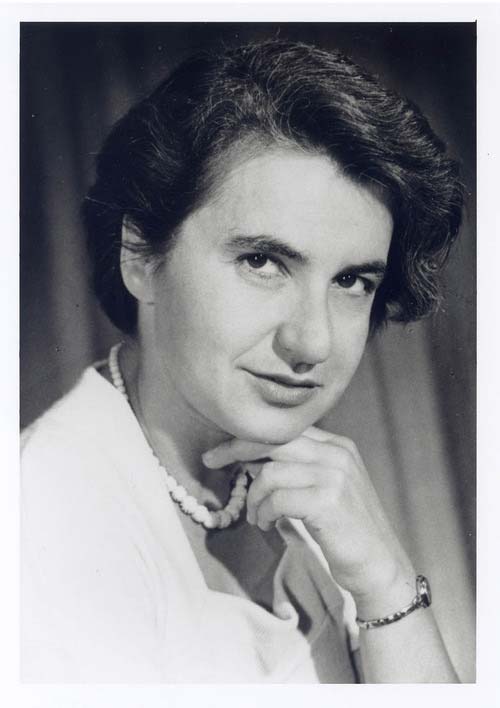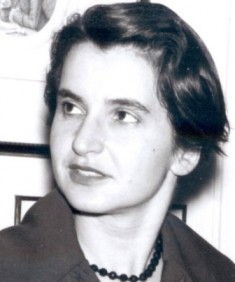| Rosalind Franklin | |
|---|---|
 |
|
| Biophysicist | |
| Specialty | X-ray crystallography |
| Born | July 25, 1920 Notting Hill, London |
| Died | Apr. 16, 1958 (at age 37) Chelsea, London |
| Nationality | British |
Rosalind Franklin was a famous British x-ray crystallographer and biophysicist who made great contributions in the understanding of fine molecular structures of DNA, coal, RNA, viruses and graphite. Her works in DNA achieved worldwide recognition because DNA plays a very important role in genetics and cell metabolism. The discovery of DNA structure helped her co-workers understand how genetic information passes from parents to their offspring.
Early Life
Rosalind was born on July 25, 1920, in London. She was the elder daughter and the second child in a family of five children. She did very well in science, physics, and chemistry. At the age of 15, she decided to become a scientist. Rosalind attended St. Paul’s Girls School in London. Here, she displayed great talent in chemistry and physics.
In 1938, she went to Newham College in Cambridge. In 1941, she graduated and was later rewarded a scholarship to work on gas chromatography. She left in 1942 to work at the British Coal Utilization Research Association. Due to her great efforts in research, she was able to get her PhD degree from Cambridge in 1945.
Rosalind’s Work with DNA
Rosalind was asked by John Randall to join a research group. She was asked to set up a laboratory to study DNA fibers by use of x-ray crystallography. This is where atoms can be precisely mapped by looking at the image crystal under x-ray beam. She was given the responsibility of determining the DNA structure. Franklin was able to apply her knowledge of physical chemistry and was therefore able to make thinner fibers in order to interpret x-ray patterns.
Rosalind was able to discover two forms of DNA; A and B. However, she opted to work more of A since it showed more x-ray spots. The two DNA forms did not show the helical structure; she originally thought this to be a ladder with bonds between the bases of the rungs. In February of 1953, she recorded in her notebook that she had revised her thoughts to that of a three-dimensional helix.
Twelve years later, the very first recitation of Rosalind’s contribution appeared. The double helix inspired other scientists to investigate the DNA history. After finishing her studies in DNA, Franklin worked on the tobacco mosaic and polio viruses.
Work at Birkbeck College
In 1953, Rosalind left King’s College in London to join Birkbeck College. Her work in this college involved the study of the structure of tobacco mosaic virus (TMV). By then, she was a senior scientist and was even able to form the Agricultural Research Council (ARC).
In 1954, she started her work in the college working alongside Aaron Klug. Her research group focused on RNA structure. RNA is a molecule that is equally central to life just as DNA. RNA constitutes genome of several viruses such as tobacco mosaic virus.
By the end of 1955, her team had completed the model of TMV. The team members were working on RNA viruses affecting plants such as potato, turnip, tea and tomato. Together with her colleagues, Rosalind Franklin produced a paper that demonstrated that RNA in TMV is wound along the inner surface of the hollow virus.
Later Life and Death
In 1956, while working in the United States, Rosalind Franklin started to feel unwell. She noticed a lump around her abdomen. An operation revealed two tumors in her abdomen. Even while undergoing her cancer treatment, Rosalind continued to work and her team continued to produce results. They were able to produce seven papers and six more in 1957. By this time, the team was also working on the polio virus after obtaining funds from Public Health Service in the United States.
By the end of the year, Rosalind fell ill again and was admitted to a hospital. She returned to work in January the following year and was even promoted. She died on April 16, 1958 in London.
